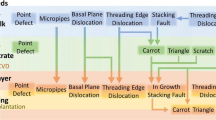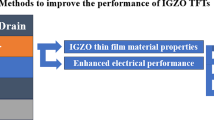Abstract.
With the scaling down process of microcircuits in semiconductor devices, the density of electric current in interconnecting metal lines increases, and the temperature of the device itself rises. Electromigration is a phenomenon that metallic atoms constructing the line are transported by electron wind. The damage induced by electromigration appears as the formation of voids and hillocks. The growth of voids in the metal lines ultimately results in electrical discontinuity. Our research group has attempted to identify a governing parameter for electromigration damage in metal lines, in order to clarify the electromigration failure and to contribute to circuit design. The governing parameter is formulated based on the divergence of the atomic flux by electromigration, and is denoted by AFD. The prediction method for the electromigration failure has been developed by using AFD. The AFD-based method makes it possible to predict the lifetime and failure site in universal and accurate way. In the actual devices, the metal lines used in the integrated circuit products are covered with a passivation layer, and the ends of the line are connected with large pads or vias for current input and output. Also, the microstructure of metal line distinguishes the so-called bamboo structured line from polycrystalline line depending on the size of metallic grains relative to the line width. Considering the damage mechanisms depending on such line structure, our research group has made a series of studies on the development of the prediction method. This article is dedicated to make a survey of some recent achievements for realizing a reliable circuit design against electromigration failure.
Similar content being viewed by others
References
N.G. Ainslie F.M. d’Heurle O.C. Wells (1972) ArticleTitleCoating, mechanical constraints, and pressure effects on electromigration Applied Physics Letters 20 173–174 Occurrence Handle10.1063/1.1654097 Occurrence Handle1972ApPhL..20..173A
J.R. Black (1969) ArticleTitleElectromigration failure modes in aluminum metallization for semiconductor devices Proceedings of the IEEE 57 1587–1593 Occurrence Handle10.1109/PROC.1969.7340
I.A. Blech (1976) ArticleTitleElectromigration in thin aluminum films on titanium nitride Journal of Applied Physics 47 1203–1208 Occurrence Handle10.1063/1.322842 Occurrence Handle1976JAP....47.1203B
I.A. Blech (1998) ArticleTitleDiffusional back flows during electromigration Acta Materialia 46 3717–3723 Occurrence Handle10.1016/S1359-6454(97)00446-1
Hasegawa, M., Sasagawa, K., Saka, M. and Abé, H. (2003). Expression of a governing parameter for electromigration damage on metal line ends. Proceedings of InterPACK’03 (CD-ROM), ASME, Paper ID IPACK2003-35064.
Hasegawa, M. (2004). Evaluation method of electromigration damage in IC metal lines and its application to practical problems. Ph.D. dissertation, Tohoku University, Sendai, Japan.
H.B. Huntington A.R. Grone (1961) ArticleTitleCurrent-induced marker motion in gold wires Journal of Physics and Chemistry of Solids 20 76–87 Occurrence Handle10.1016/0022-3697(61)90138-X Occurrence Handle1961JPCS...20...76H
R. Kirchheim U. Kaeber (1991) ArticleTitleAtomistic and computer modeling of metallization failure of integrated circuits by electromigration Journal of Applied Physics 70 172–181 Occurrence Handle10.1063/1.350305 Occurrence Handle1991JAP....70..172K
M.A. Korhonen P. Børgesen K.N. Tu C.-Y. Li (1993) ArticleTitleStress evolution due to electromigration in confined metal lines Journal of Applied Physics 73 3790–3799 Occurrence Handle10.1063/1.354073 Occurrence Handle1993JAP....73.3790K
Marcoux, P.J., Merchant, P.P., Naroditsky, V. and Rehder, W.D. (1989). New 2D simulation model of electromigration. Hewlett-Packard Journal June, 79–84.
McPherson, J.W. (1986). Stress dependent activation energy. Proceedings of the 24th IEEE International Reliability Physics Symposium, IEEE, 12–18.
Nikawa, K. (1981). Monte Carlo calculations based on the generalized electromigration failure model. Proceedings of the 19th IEEE International Reliability Physics Symposium, IEEE, 175–181.
A.S. Oates (1991) ArticleTitleElectromigration in multilayer metallization: drift-controlled degradation and the electromigration threshold of Al–Si–Cu/TiN X O Y /TiSi2 contacts Journal of Applied Physics 70 5369–5373 Occurrence Handle10.1063/1.350218 Occurrence Handle1991JAP....70.5369O
Y.J. Park C.V. Thompson (1997) ArticleTitleThe effects of the stress dependence of atomic diffusivity on stress evolution due to electromigration Journal of Applied Physics 82 4277–4281 Occurrence Handle10.1063/1.366234 Occurrence Handle1997JAP....82.4277P
K. Sasagawa N. Nakamura M. Saka H. Abé (1998) ArticleTitleA new approach to calculate atomic flux divergence by electromigration Transactions of the ASME, Journal of Electronic Packaging 120 360–366
K. Sasagawa K. Naito M. Saka H. Abé (1999) ArticleTitleA method to predict electromigration failure of metal lines Journal of Applied Physics 86 6043–6051 Occurrence Handle10.1063/1.371652 Occurrence Handle1999JAP....86.6043S
K. Sasagawa M. Hasegawa M. Saka H. Abé (2000) ArticleTitleAtomic flux divergence in bamboo line for predicting initial formation of voids and hillocks Theoretical and Applied Fracture Mechanics 33 67–72 Occurrence Handle10.1016/S0167-8442(99)00052-X
K. Sasagawa M. Hasegawa K. Naito M. Saka H. Abé (2001) ArticleTitleEffects of corner position and operating condition on electromigration failure in angled bamboo lines without passivation layer Thin Solid Films 401 255–266 Occurrence Handle10.1016/S0040-6090(01)01620-0
K. Sasagawa M. Hasegawa M. Saka H. Abé (2002a) ArticleTitleGoverning parameter for electromigration damage in passivated polycrystalline line Journal of Applied Physics 91 1882–1890 Occurrence Handle10.1063/1.1432120 Occurrence Handle2002JAP....91.1882S
K. Sasagawa M. Hasegawa M. Saka H. Abé (2002) ArticleTitlePrediction of electromigration failure in passivated polycrystalline line Journal of Applied Physics 91 9005–9014 Occurrence Handle10.1063/1.1475354 Occurrence Handle2002JAP....91.9005S
Sasagawa, K., Hasegawa, M., Yoshida, N., Saka, M. and Abé, H. (2003). Prediction of electromigration failure in passivated polycrystalline line considering passivation thickness. Proceedings of InterPACK’03 (CD-ROM), ASME, Paper ID IPACK 2003-35065.
Villars, P. (1997). Pearson’s Handbook Desk Edition – Crystallographic Data for Intermetallic Phases, Vol. 1, ASM International, Materials Park, USA.
Author information
Authors and Affiliations
Corresponding author
Rights and permissions
About this article
Cite this article
Abé, H., Sasagawa, K. & Saka, M. Electromigration Failure of Metal Lines. Int J Fract 138, 219–240 (2006). https://doi.org/10.1007/s10704-006-0059-6
Received:
Accepted:
Issue Date:
DOI: https://doi.org/10.1007/s10704-006-0059-6




